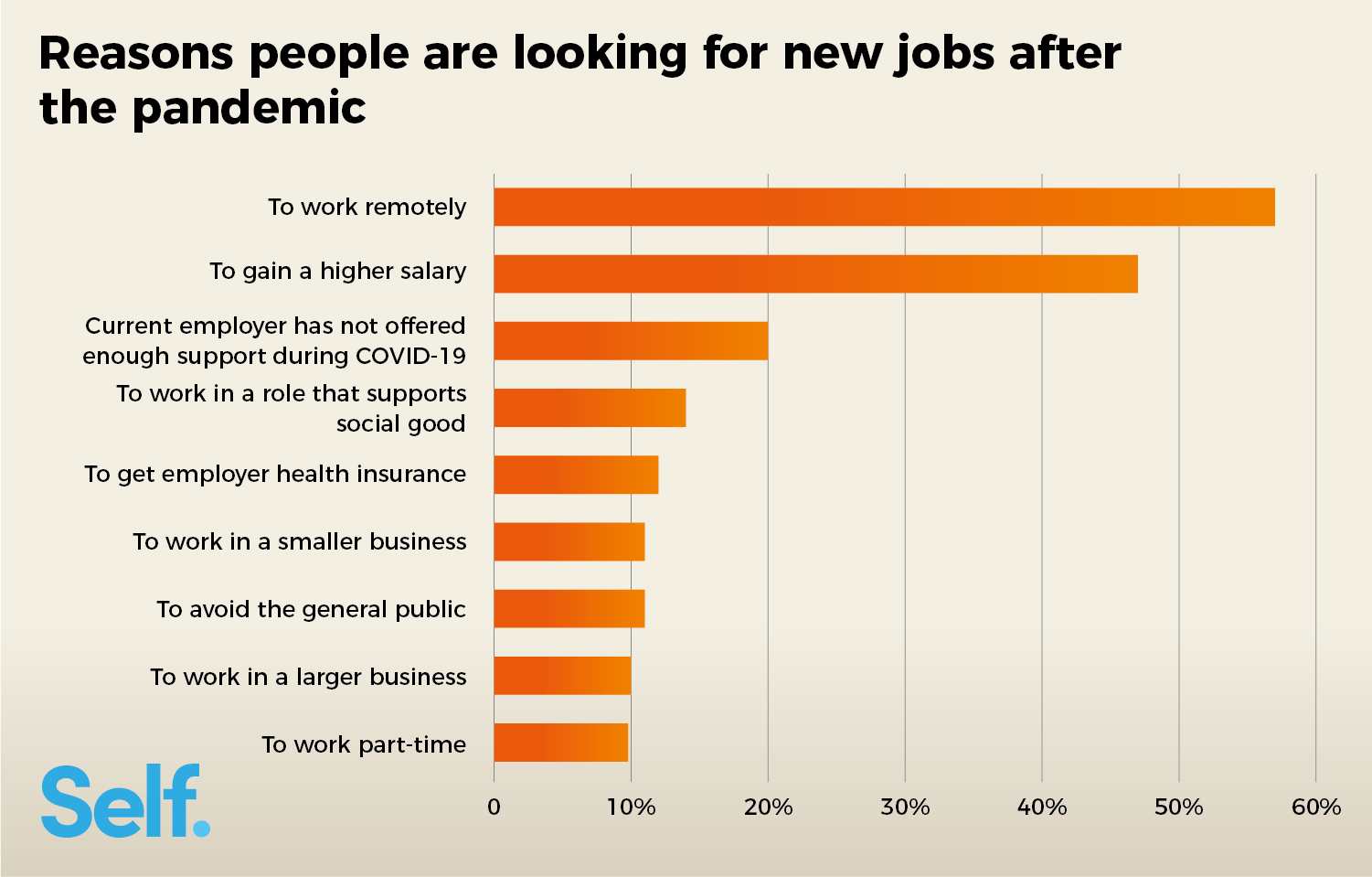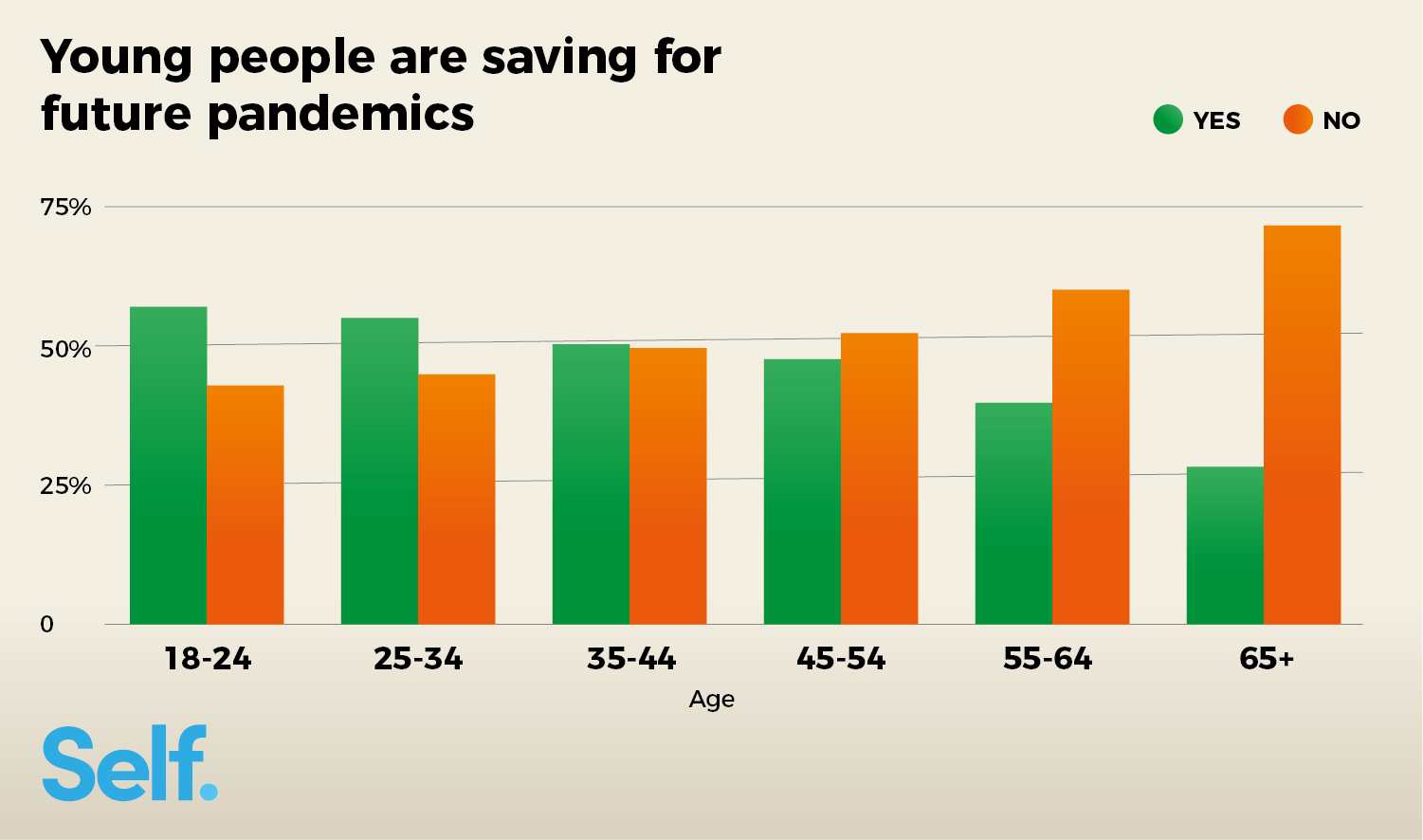54% Of Americans Have Started A Side Hustle During The COVID-19 Pandemic

- 30% of Americans plan on quitting their jobs once the pandemic is over
- Over half (54%) of Americans have started a “side hustle” during the pandemic
- More than 1 in 4 (27%) Americans are eating less to ration food
- Over half (51%) of respondents are now saving for a future pandemic
- Americans are spending an additional $69 a week on food during the COVID-19 pandemic
- Americans are spending $155 per week on groceries, up from $86
The Great Depression was the worst economic downturn in the history of the industrialized world, lasting from 1929 to 1939. It began after the stock market crash of October 1929, which sent Wall Street into a panic and wiped out millions of investors. Unlike other countries, however, the war left America well positioned for economic growth as American ingenuity turned from producing machinery for wars to solving human problems and needs. America rose from the ashes to become the greatest country on the planet.
This coronavirus pandemic is another reminder that Americans are innovative and resilient in the face of adversity, tragedy, and threats. We will come out of this pandemic better and stronger. As Americans, our financial priorities have changed during this global pandemic. According to new data, the average American has changed their views on cooking, shopping, employment and saving. To find out how lifestyles had been altered by the pandemic, Self.inc, a fintech startup that helps thousands of people begin their financial journey with a credit builder account, surveyed 1,340 members of the American public about their lives during COVID-19 to uncover how people are changing their habits to cope with this unique situation.
When asked about their grocery store habits, 67% of shoppers said they were spending more on their weekly shopping, with the average household spending $69 extra a week on food as the average grocery shop during the pandemic has risen to $155 per week; an 80% increase in ‘food at home’ expenditure when compared to previous figures on 2018 household expenditures.
However, our data also revealed that just under a quarter (24%) of respondents said they are spending between $100-$200 extra a week on top of their existing food budget.
When asked about where they do their shopping, 2 in 5 (39%) respondents stated they will be boycotting businesses that did not act responsibly during the pandemic, such action was recently seen with beauty brand, Sephora.
With increased amounts of grocery shopping, it is no surprise that 1 in 3 (33%) say they are learning to cook or experimenting in the kitchen. While some are spending more time in the kitchen, a quarter of (27%) respondents said they are rationing food during lockdown.
When asked about their food habits, almost 1 in 4 (23%) of those surveyed said they were now eating more vegetarian and vegan meals during lockdown, compared to just 11% of respondents who said they were eating more meat at this time. 1 in 3 (32%) said they were eating more junk food due to quarantine measures, while 31% said they had taken this time to eat more healthy options.
The survey also asked people about their employment plans revealing that 30% of respondents plan on changing their job once the pandemic is over. Of those looking to change jobs, 57% stated they would leave their current job to seek one that offers remote working.

In addition to finding new employment, 54% of respondents revealed they planned on starting a “side hustle” due to the COVID-19 pandemic. This decision was largely chosen by Gen Z and Millennials, with 70% and 62% saying they were starting side hustles respectively.
When asked how long they may survive if they faced immediate unemployment due to COVID-19, 1 in 5 (21%) stated they had a 2 week buffer until they would be in financial trouble. The average response stated they could cope financially for a month if they were laid off.
With regards to finances, over half (51%) of respondents stated they were saving for a future pandemic, this trend was particularly prominent in younger people, with older generations not feeling the need to set money aside for a future virus outbreak. Of those that are saving for a future pandemic, a quarter (24%) plan to save between $1500-$2500.

James Garvey, CEO, at Self.inc, had this to say on the results
“It’s promising to see that this economic uncertainty is not stopping people from spending more in the shops, saving for future pandemics and changing jobs when they are not happy. It’s not surprising to see such a large focus on remote working as a reason for leaving a job when so many have been exposed to its benefits during lockdown, there could be a remote working revolution incoming in 2021. Coronavirus will have a lasting impact on every part of our lives.
“With 1 in 10 stating they only have a week to be financially stable if they are laid off, it’s important to seek out financial assistance as early as possible. You can see what help is available to you through the official government website https://www.usa.gov/benefits-grants-loans, but don’t overlook your state’s benefits, or the services of a local nonprofit too.”
Please see full analysis here: https://www.self.inc/info/coronavirus-spending-habits-statistics/
METHODOLOGY
Self.inc surveyed 1,340 people across all age groups, 60% were female and 40% male. The age breakdown of respondents was as follows:
- 18-24 (15.8%)
- 25-34 (34.9%)
- 35-44 (24.6%)
- 45-54 (12.7%)
- 55-64 (8.1%)
- 65+ (4.0%)
The survey was conducted on 10th-14th April collecting responses across five days.
Average weekly spend was calculated using data from the U.S. Bureau of Labor Statistics Consumer Expenditures – 2018 report
FURTHER DATA
| Reason for seeking new employment | % |
| To work remotely | 57.4 |
| To gain a higher salary | 47.8 |
| Current employer has not offered enough support during pandemic | 20.3 |
| To work in a role that supports social good | 14.3 |
| To gain employer health insurance | 12.9 |
| To work in a smaller business | 11.3 |
| To avoid the general public | 11.0 |
| To work in a larger business | 10.7 |
| To work part-time | 9.9 |
| Are you saving for a future pandemic? | ||
| YES | NO | |
| 18-24 | 57.08 | 42.92 |
| 25-34 | 55.03 | 44.97 |
| 35-44 | 50.30 | 49.70 |
| 45-45 | 47.65 | 52.35 |
| 55-64 | 39.81 | 60.19 |
| 65+ | 28.30 | 71.70 |
| How long could you financially survive? | % |
| 1-7 days | 10.4 |
| 1-2 weeks | 11 |
| 2-3 weeks | 8 |
| 1 month | 18 |
| 1-2 months | 15.4 |
| 2-3 months | 13 |
| 3-4 months | 10.8 |
| 4 months + | 13.4 |




